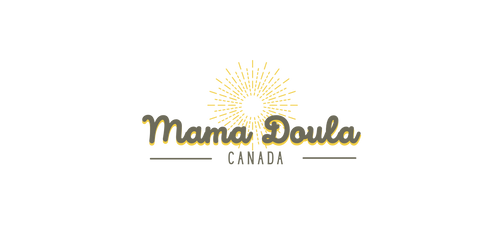O parto é um evento transformador, mas pode causar lacerações ou rasgos perineais, causando desconforto e potenciais complicações para as mães. Este artigo explora resultados de pesquisas contemporâneas e abordagens baseadas em evidências que visam atenuar lacerações perineais durante o trabalho de parto e o parto.
Lacerações perineais, rasgos que ocorrem entre a abertura vaginal e o ânus, podem causar dor, disfunção sexual e até sofrimento psicológico se não forem tratadas adequadamente. Exploramos diversas técnicas que os profissionais de saúde podem adotar para reduzir o risco de lacerações perineais, melhorando assim os resultados pós-parto para as parturientes.
Anatomia e Fisiologia
O períneo, a área entre o ânus e a abertura vaginal, é propenso a lacerações durante o parto. Compreender a anatomia perineal é fundamental para prevenir e tratar lacerações. As lacerações perineais são categorizadas em quatro graus:
Primeiro grau: envolve a pele perineal e pode se estender até a mucosa vaginal.
Segundo Grau: Estende-se até a mucosa vaginal e camada muscular.
Terceiro grau: abrange o esfíncter anal, sendo dividido posteriormente com base na gravidade do rasgo.
Quarto grau: estende-se até a mucosa retal.
Lacerções perineais graves, como rasgos de terceiro e quarto graus, são denominadas Lesões Obstétricas do Esfíncter Anal (OASIS).
Fatores de Risco e Indicações
Lacerções perineais são comuns durante o parto, afetando até 89% das mulheres. Lacerações graves, particularmente a OASIS, podem levar a complicações duradouras. Os fatores de risco incluem idade materna avançada, alto IMB pré-gestacional, nuliparidade, parto vaginal após cesariana (VBAC), parto hospitalar, administração de ocitocina durante o segundo estágio do trabalho de parto, segundo estágio prolongado do trabalho de parto e diabetes gestacional.
Episiotomia e Técnicas Preventivas
A episiotomia, uma vez realizada rotineiramente, não é recomendada para a prevenção de lacerações perineais devido à falta de evidências substanciais que sustentem seu uso. Tanto a Organização Mundial da Saúde quanto o Colégio Americano de Obstetras e Ginecologistas recomendam sua aplicação criteriosa. Estratégias para prevenir lacerações perineais incluem partos fora do hospital e assistência por parteiras. A massagem perineal apresenta benefícios potenciais na redução da gravidade das lacerações e na promoção do relaxamento perineal, e compressas mornas podem demonstrar taxas reduzidas de lacerações graves, mas mais pesquisas são necessárias.
Insights de estudos recentes: Identificando fatores de risco
Estudos recentes forneceram mais insights sobre fatores de risco associados a lacerações perineais. Em uma análise retrospectiva de Bączek et al. (2022), os fatores de risco incluíram idade materna, IMC, número de gestações e partos, diabetes gestacional, parto vaginal após cesárea (PVAC), uso de ocitocina no segundo estágio do parto, duração do segundo estágio do parto, peso corporal e circunferência da cabeça do recém-nascido. Um estudo de coorte prospectivo de Jansson et al. (2020) enfatizou a importância do peso fetal superior a 4000g, extração a vácuo, parto pós-termo, posições maternas ao nascer, hereditariedade da disfunção do assoalho pélvico, trabalho de parto induzido e circunferência da cabeça fetal em lacerações perineais e vaginais.
Reparo e Complicações
O tratamento eficaz da laceração perineal exige uma avaliação completa da extensão e das estruturas anatômicas envolvidas. As técnicas de sutura variam de acordo com o grau da laceração. As complicações incluem sangramento, infecção, dor, incontinência e retardo no retorno à função sexual. Consequências a longo prazo, como incontinência urinária ou anal, podem impactar significativamente a qualidade de vida da mulher.
Importância e melhores resultados em saúde
O trauma perineal afeta profundamente o bem-estar físico e psicológico das mulheres. Abordar e validar as preocupações são aspectos essenciais do cuidado pós-parto. As equipes de saúde devem adotar estratégias para prevenir o trauma perineal. Os médicos devem reconhecer a importância do cuidado integral, não apenas durante o trabalho de parto, mas também no pós-parto, para garantir o bem-estar das mulheres que sofreram lacerações perineais.
Conclusão
À medida que o conhecimento médico avança, a abordagem ao cuidado perineal durante o parto continua a evoluir. Práticas baseadas em evidências e cuidados personalizados desempenham um papel fundamental na minimização de lacerações perineais e suas complicações associadas. Ao integrar as descobertas mais recentes da pesquisa à prática clínica, os profissionais de saúde podem contribuir para experiências de parto mais seguras e satisfatórias para as mulheres.
Referências:
Bączek, G., Rzońca, E., Sys, D., Rychlewicz, S., Durka, A., Rzońca, P., & Bień, A. (2022). Trauma perineal espontâneo durante parto não operatório — Análise retrospectiva dos fatores de risco para laceração perineal. Revista Internacional de Meio Ambiente

